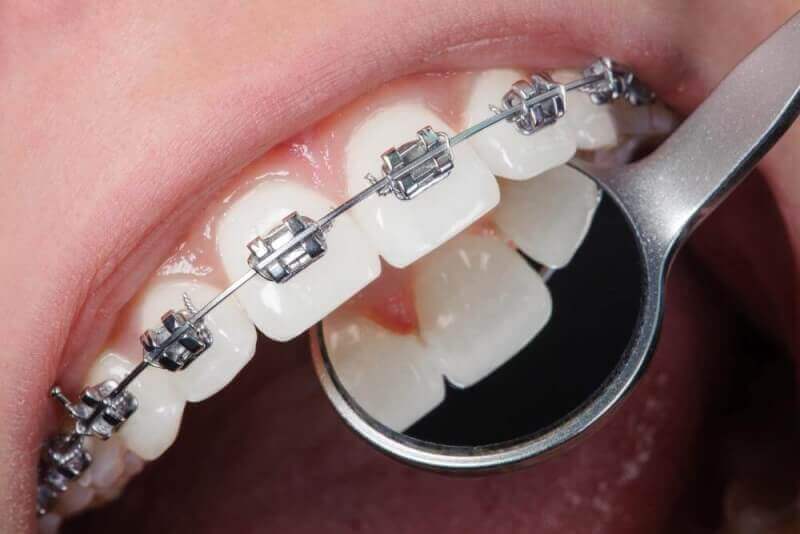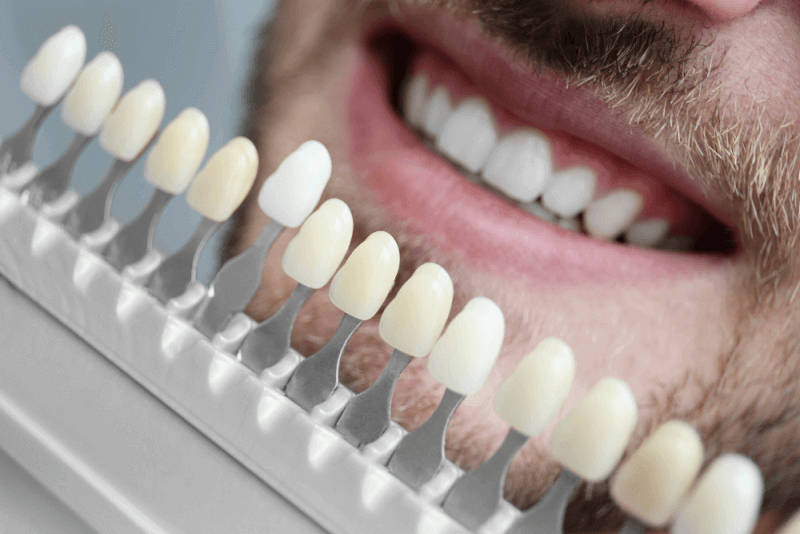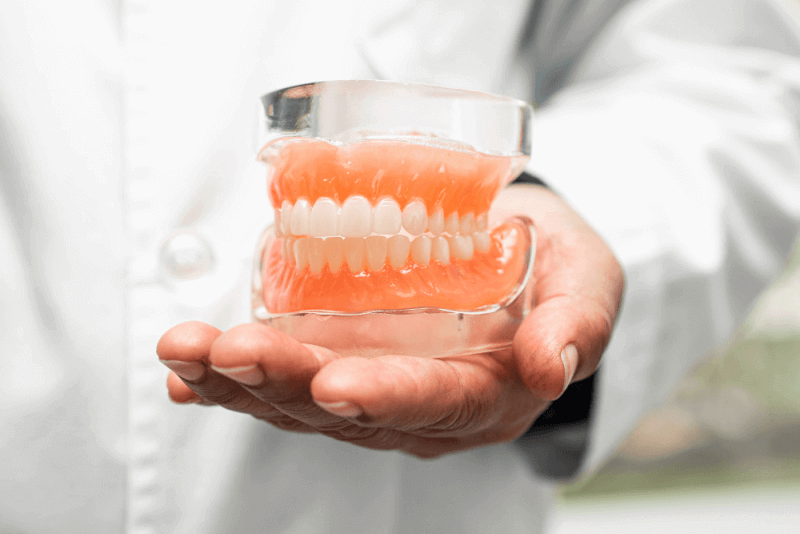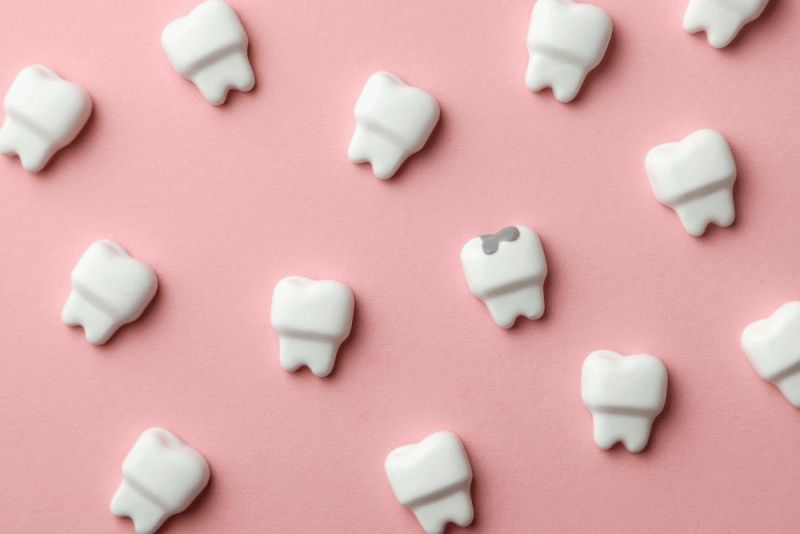What is orthodontics?
Orthodontics, one of the specialties of dentistry, provides diagnosis and treatment of disorders in both the jaw and teeth. It also provides treatment of lower and mid-face irregularities.
There are two different treatment methods in orthodontics. The age of the patient is important in determining the treatment. These treatment methods, which are divided into two as mobile and fixed, are not only related to crooked teeth. It is also used in the treatment of non-skeletal disorders. However, these treatments should be applied before the completion of puberty.
The specialty of orthodontics is the repositioning of teeth that are generally incorrectly positioned. For this, it provides diagnosis and treatment of jaw bones and facial irregularities.
The aim of orthodontic treatments is to create a tooth structure that is properly aligned and meets each other. While aesthetic problems are eliminated with orthodontic treatments, dysfunctions are also eliminated.
Conditions requiring orthodontics
Orthodontic problems can be treated at any age starting from childhood. However, these problems have a serious impact on people's social lives. Disorders recognized in childhood can be treated in a short time. However, problems need to be recognized at an early stage. An orthodontic specialist should be consulted for the following problems, especially in children:
- Upper and lower teeth never come into contact
- Unbalanced face and jaw structure
- Early or late loss of milk teeth
- Mouth breathing
- Crowded tooth structure
- Incorrect positioning of teeth
- Disorders such as thumb sucking or nail biting
- Front positioned teeth
- Long-term use of pacifiers or bottles
- Jaw structure positioned forward or backward
- Difficulty chewing or speaking
Orthodontic problems
Orthodontic problems can be summarized as problems with gums and other dental treatments. These disorders seriously affect the appearance and oral structure of the person. The main reason for this is the incorrect positioning of the teeth during the development of the jaw.
Perplexity
When it comes to orthodontic problems, the first disorder that comes to mind is crowding. It is a problem caused by the jaw structure and teeth not being compatible with each other. In the problem of crowded teeth divided into 3 different stages, crowding between 2 and 4 mm is considered mild, crowding between 4 and 7 mm is considered moderate and crowding above 8 mm is considered severe.
Rotated teeth
Rotated teeth, also called rotated teeth, are one of the most important problems among orthodontic problems. If these teeth, which take up more space than normal in the jaw structure, are not treated, it causes crowded teeth problems. For this reason, it should be recognized and treated at an early age.
Intermittent teeth
The reason for intermittent tooth problems is that the gum fibers between the teeth are thick and the structure of the teeth is smaller than normal. If spaced teeth are left untreated, orthodontic problems that can damage the teeth are highly likely to occur. For this reason, braces can be used to bring the teeth closer together or aesthetic dental treatments can be applied to lengthen the teeth in order to achieve an aesthetic appearance.
Closing disorders
It is possible to talk about bite disorders when the teeth do not close exactly by meeting each other. Closing disorders are divided into three types: cross, overlap and posterior closure disorders and different treatment methods are applied for each of them.
Overbite disorders are caused by excessive elongation of the upper teeth. For this reason, the upper gums are more visible than normal during smiling. Crossbite disorders, also called test bite, are one of the problems that require the fastest treatment among orthodontic problems. Finally, anterior and posterior bite problems occur because the teeth in these areas are positioned far from each other. The cause of anterior and posterior closure problems is finger sucking or prolonged use of a pacifier.
Impacted teeth
The teeth that remain between the jawbone and palate because they cannot find a place in the oral cavity are called impacted teeth. This may cause problems with other teeth over time. The most commonly treated impacted teeth are the upper canines and wisdom teeth. Impacted teeth can also cause other teeth to be crowded. For this reason, it causes serious orthodontic problems.
Missing teeth
Some people may have congenital tooth deficiencies. The problem is treated by making prosthetic teeth instead of missing teeth, which is one of the most common problems among orthodontic problems. In addition, the gap can also be closed with braces.
Advanced jaw condition
In the treatment of jaw disorders, which are among the orthodontic problems, extraoral appliances are used to stop advanced jaw development. In addition, it is possible to take the jaw back with orthognathic surgical interventions.
Stenosis of the jaw
The most important symptom of upper jaw stenosis is crossbite of the back teeth. If the jaw stenosis is not treated, the teeth may overlap.
Prosthesis problems
In the event that the places of previously extracted teeth are not treated for many years, the teeth adjacent to the cavity are damaged. To correct these defects, the adjacent teeth are straightened and the gap is restored to normal dimensions. A bridge or implant is then placed in the cavity.
Cleft palate and lip
Cleft palate, a congenital developmental disorder, is seen in one in every 700 babies. It is necessary to wait until the age of 7 to start orthodontic treatment. Because permanent teeth start to erupt from this age. The lip can be returned to its normal form with aesthetic operations.
Orthodontic treatment methods
Orthodontic treatment is a treatment consisting of several stages. Before treatment, patients are examined and the problem is identified. The magnitude of the problem is then determined by detailed examination. Afterwards, the treatment is determined in detail.
Before orthodontic treatments can begin, a preparatory phase is required. This preparatory phase creates the necessary conditions for orthodontic treatment to begin. One of the most important of these conditions is oral hygiene. For this reason, decayed teeth should be identified and treated. After the oral care is done perfectly, the treatment is started. Afterwards, the necessary measurements and analyzes are made to plan the treatment. The appropriate treatment method is created according to the patient's needs and measurements. The decision stage belongs to the patients. Patients are given full information when deciding on treatment. Because teeth may need to be extracted for some treatments.
In the treatment phase, a retractor is inserted into the mouth. This will allow the patient's mouth to remain open during the treatment procedures. This allows the orthodontist to perform the procedures easily. 6There are different methods for the installation of braces. First, the brackets are glued to the teeth and then wires, called arches, are passed between them.
Types of orthodontics
Since the health problems that require orthodontic treatment are different from each other, treatment methods also vary. Orthodontic treatment types include the following.
Wireless orthodontics (Invisaling)
Digital orthodontic treatment technology is applied in this treatment method using transparent aligners. In the treatment of crooked teeth, it is possible to apply treatment without the use of braces.
What are the characteristics of Invisaling treatment?
Among the features of invisaling treatment are the following:
- It ensures that daily life is not affected.
- It is not visible in the mouth.
- The plates can be removed while eating.
- On special occasions, the transparent plaques can be removed and the treatment can be interrupted for a few hours.
- Transparent plaques can be applied to all age groups.
- There is no use of brackets, metal and wire.
- Intraoral scanners can provide preliminary information about the treatment outcome.
How do teeth move with clear aligners?
In Invisaling treatment, the aligners are worn for 15 days and then the patient is switched to the next aligner specially prepared for the patient. Because each plaque used allows the teeth to move 0.005 mm. Each plaque is produced in such a way that the teeth are organized according to the desired result.
In order for the aligners to be specially prepared for the patients, impressions are first taken in the mouth. Afterwards, these measurements are transferred to the computer environment by 3D scanning method with CAD-CAM method. The teeth are then simulated in a specially designed program and transparent aligners are produced according to this simulation. Thanks to the program used, patients can observe the 3D movement of the result in a virtual environment.
How should transparent plaques be used?
The doctor decides on Invisaling treatment, which is one of the orthodontic treatments that can be applied to both adults and children. The points that patients should pay attention to in transparent plaque treatment, which is suitable for the treatment of mild and moderately crowded teeth, include the following:
- During the treatment period, patients should wear the transparent plates for 20-22 hours. For this reason, patients are advised to remove their plaque only when eating.
- If you do not want to use the transparent plaques on special occasions, they can be removed during the event. However, this should not be repeated too often.
- There is no problem in consuming food and drinks with normal temperatures. However, the plaque must be removed before consuming hot foods such as tea. Because transparent plaques are thermoplastic.
- The most important point for a positive result from the treatment is the regular use of the plaques.
Metal braces
Metal braces are one of the first methods that come to mind when it comes to orthodontic treatments. Metal braces, which are a type of bracket, are attached to the inner or outer part of the teeth. It is resistant to breakage due to its durability. However, since the duration of treatment is up to 30 months and the wires are not removed during the treatment, the decision should be well thought out.
Who can get metal braces?
Metal braces are especially recommended for patients who start treatment at an early age. Apart from this, the criteria for people who are suitable for metal braces treatment are as follows:
- Early extraction of deciduous teeth
- Large gaps between the teeth
- Carious teeth and gum diseases due to crowded teeth
- Missing teeth
- Those with cleft lip or palate
- Experiencing jaw locking
- Noise from the jaw joint
- Those uncomfortable with his smile
- Those with habits such as thumb sucking, mouth breathing and nail biting
- Forward or backward positioned jaws
- Those with curvature disorders in the upper and lower jaws
- Those with teeth positioned in front
- Those with unbalanced facial and jaw structure
- People with chewing and speech disorders
- Those with crooked or misplaced teeth
- Those with general orthopedic problems
How is metal braces treatment performed?
Patients with orthodontic problems undergo a detailed examination before metal braces treatment is applied. In the meantime, treatment of detected decayed teeth and gum diseases is provided. Images of the inside of the mouth are taken and the most suitable braces are designed for the patient.
Patients' mouths must remain open during the procedure so that the physicians can work comfortably. For this, it helps to keep the mouth stable by widening the mouth. In addition, the teeth must be dry when wearing braces. To achieve this, instruments are used to isolate the saliva.
Two different directions are used for the placement of the brackets. The first of these methods is the classical method. In the classical method, the tooth surfaces are roughened before the brackets are individually bonded to each tooth. Afterwards, the overflowing parts of the adhesives used for bonding are cleaned and special devices are used to dry the adhesive quickly. Finally, the process is completed by passing the arches through the brackets.
Another method used in metal braces treatment is the indirect bonding method. In this method, an impression of the patient's mouth is taken before the braces are applied and then the brackets are prepared by gluing them on this impression. In this way, the application is completed in a shorter time.
Advantages of metal braces
Although metal braces have been replaced by transparent braces in recent years, metal braces are still the most reliable method in orthodontic treatment. Excellent results are obtained with metal braces applied especially at a young age. It also provides idealization of appearance as it directs the jaw development of children. Other advantages of metal braces are as follows:
- Orthodontic treatment is the most commonly recommended by doctors.
- It provides a good observation of the treatment process.
- It does not cause an allergic reaction.
- It can be applied to patients of all ages.
- It is the most durable braces. For this reason, it is also the most difficult type of braces to break.
- It is the orthodontic treatment with the fastest results.
- It is the most economical option compared to other wires.
Disadvantages of metal braces
In addition to the advantages of metal braces, there are also some disadvantages. For this reason, both sides need to be taken into account when patients make decisions. The disadvantages of metal braces include the following:
- The biggest disadvantage of metal braces is that they are noticeable from the outside.
- They remain permanently attached to the teeth until the end of the treatment.
- Nuts and hard foods should not be consumed.
- Foods such as cola or chocolate should also be avoided.
Porcelain braces
Porcelain braces, also called transparent braces, are one of the most preferred orthodontic treatments in recent years due to their aesthetic appearance. It is especially preferred to ensure that social and work life is not affected by the treatment. Designed for the treatment of adults, porcelain braces are made of a composite material that resembles glass. It also provides an aesthetic appearance thanks to being the same as the tooth color.
Who are porcelain braces applied to?
Porcelain braces are applied to everyone who can be treated with braces. Porcelain braces, which are especially preferred by people with aesthetic concerns, are suitable for adults.
How is porcelain braces treatment applied?
The application of porcelain braces involves the same procedures as the application of metal braces. The only difference is that they are the same color as the tooth color, so they are not very noticeable from the outside.
What are the advantages of porcelain braces?
The biggest advantage of porcelain braces is of course that they provide an aesthetic appearance. In addition, other advantages include the following:
- Thanks to technological developments in porcelain braces, porcelain braces are at least as strong as metal braces.
- The treatment time is similar to that of metal braces.
- Resistant to impacts and hard food.
- A healthy observation of the treatment process is ensured.
Disadvantages of porcelain braces
The disadvantages of porcelain braces include the following.
- Porcelain braces give slower results compared to metal braces. This period is usually 1 to 2 months.
- In terms of durability, it is less than metal braces.
Lingual orthodontics
Lingual orthodontics, which is one of the types of braces applied for the correction of crowded teeth, is also called invisible braces. In this method, braces are applied to the back of the teeth. This does not affect the appearance of the teeth.
Who can receive lingual orthodontics?
Lingual braces can be applied to patients of all ages. It is especially preferred for people who are constantly in a social and business environment due to the aesthetic advantages it provides. In addition, the criteria that are suitable for Lingual treatment include the following:
- People who have a habit of grinding their teeth
- People who take care of their appearance
- People who suffer from forward slippage
- People with upper and lower jaw imbalances
- In general orthodontic problems
How is lingual orthodontics applied?
A detailed examination is performed before the lingual orthodontic treatment is applied. Lingual braces are then designed according to the patient's oral structure. Although the brackets used in lingual orthodontic treatment are different from those used in normal braces, their bonding and other applications are similar to metal braces. Compliance is monitored after the braces are fitted. Completion of treatment varies between 1 and 2.5 years. The reason for this change is the extent of the orthodontic problem.
What are the advantages of lingual orthodontics?
Lingual orthodontics has similar advantages to metal braces. These advantages include the following:
- Compared to metal braces, lingual orthodontic treatment is not noticeable from the outside.
- It does not affect patients' social and work life.
- There is no age limit for the app.
- It is not allergic.
- Since lingual braces are specially applied to patients, problems that may be experienced during treatment are minimized.
Adult orthodontics
It is possible to talk about adult orthodontic treatment if orthodontic treatment is performed in adulthood because orthodontic problems have not been treated at a young age. Thanks to adult orthodontics, even elderly patients can have an aesthetic smile. Among the problems that can be treated with adult orthodontics, there are various treatment methods from braces to discolored teeth due to bad breath. These treatment methods give results in a short period of time, just like the treatment of children and young people.
Why is adult orthodontic treatment performed?
There is no upper age limit for orthodontic treatment. For this reason, it is easily applied even to elderly people and successful results are obtained. Orthodontic problems for which adult orthodontics is applied include the following.
- Tooth grinding
- Congenital abnormalities
- Inhibition of mouth breathing
- Aesthetic appearance of teeth and lips
- Positioning the jaw that is forward or backward
- Filling lost teeth
- Closing disorders
- Crooked or incorrectly positioned teeth
Methods used in adult orthodontics
Thanks to the developing technology in orthodontic treatments, the results obtained in adult orthodontics are at least as successful as the treatments applied at young ages. The following methods are included in adult orthodontic treatments.
- Invisaling
- Orthognathic surgery
- Aesthetic braces
- Clamshell brackets
Advantages of adult orthodontic treatment
Among the advantages that adult orthodontic treatment provides to patients are the following.
- Prevention of traumas caused by the upper teeth not being brushed
- Prevention of tooth fractures
- Prevention of tooth loss
- Improving physical appearance
- Increased self-confidence
- Correct positioning of the jaw and teeth
- Solving narrow or advanced jawbone problems
- Treatment of crowded teeth
Pediatric orthodontics
In order for children to have healthy and aesthetic teeth throughout their lives, orthodontic problems should be treated in childhood. These treatments for children are generally called pediatric orthodontic treatment. Children should have regular dental check-ups from the time their first teeth erupt. It is also important for families to be aware of orthodontic problems and to recognize possible problems at the first stage.
Why are pediatric orthodontic treatments performed?
Children's milk teeth are completed at approximately 2.5 years of age. The first molars that erupt in the back are effective in determining the bite. For this reason, orthodontic specialists can determine whether there are any orthodontic problems in children by looking at these teeth.
By the time children are 7 years old, the front incisors have grown in and it is easier to identify problems such as jaw clenching, thumb sucking or deep bite. Orthodontic treatments ensure that children's teeth and jaw structures develop correctly. Orthodontic problems subject to pediatric orthodontic treatment are as follows.
- Early or late loss of milk teeth
- Unbalanced facial appearance
- Upper and lower teeth not touching each other
- Abnormal closure of the upper and lower teeth
- Mouth breathing
- Finger sucking
- Nail biting
- Cheek biting
- Lip biting
- Excessively forward or backward positioned chin
- Front positioned teeth
- Unerupted teeth
- Crooked teeth
- Incorrectly positioned teeth
How is pediatric orthodontic treatment performed?
Pediatric orthodontic treatment starts with an examination. It continues until the so-called mixed dentition period, which ends with the eruption of the second molars at the age of 12. Orthodontic treatments for children are applied after the permanent teeth begin to erupt. First-stage orthodontic treatments continue until the age of 12. If necessary, second stage orthodontic treatments are applied and orthodontic problems are solved quickly. Pediatric orthodontic treatment includes the following.
- Shooting
- Impacted tooth eruption
- Chin expansion
- Intraoral fixed appliances
- Extraoral appliances
- Removable appliances
Advantages of pediatric orthodontics
The advantages of pediatric orthodontics include the following:
- Prevents traumas that may occur due to the brushing of the front teeth
- Prevents tooth fractures
- Tooth decay is prevented
- Gum diseases are prevented.
- Improves physical appearance.
- It helps children to develop self-confidence.
- Jaw development ensures the healthy formation of tooth growth.
- It provides the regulation of the forward and backward jaw structure.
- Provides narrow jaw treatment.
- It prevents bad habits such as thumb sucking or mouth breathing.
- It ensures that the teeth are arranged as they should be.
- Early treatment prevents orthodontic problems that can be seen in adulthood.
Removable orthodontic appliances
Removable orthodontic appliances are basically the name given to orthodontic treatment tools that patients can put on and take off when desired. In pediatric patients, it is used to prevent stenosis in the jaw, especially when the teeth begin to erupt. This makes room for other teeth. Removable appliances include the following:
- Placeholders
- Reinforcement appliances
- Jaw expanding appliances
- Habit-breaking appliances
- Transparent plaques
The working logic of movable appliances is to determine the shape of the palate by applying force to the palate.
In which treatments are removable appliances used?
Orthodontic problems in which removable appliances are used include the following:
- Elimination of dental and visual defects caused by prematurely extracted milk teeth
- Closing the gaps between teeth
- Prevention of dental caries and gum diseases that may be seen due to crowding
- Problems with mouth closure
- Mouth breathing
- Finger sucking
- Nail biting
- Jaw joint problems
- Regulation of chewing functions
- Regulation of speech functions
- Prevention of traumas that may occur due to loose teeth
- Compensation for tooth loss
- Correction of abnormalities in the upper or lower teeth
- Jaw positioned forward or backward
- Unbalanced facial and jaw structure
- Correction of crooked or misaligned teeth
Types of intraoral removable appliances
Depending on the orthodontic problem, the type of oral appliance to be used in the treatment also varies. Intraoral removable appliances used in orthodontic treatment include the following:
- Monoblocks, which grip both jaws in one piece, are used in cases where the lower jaw is forward or the jaw is misaligned.
- Twin blocks are used to pull the lower jaw forward and twin blocks consist of 2 parts.
- Activators are used in patients with severe closure disorders. The activators that support the jawbone consist of two parts.
- The hawleys made of acryl are easily cleaned because they are movable. Hawleys can be used for 2 years after orthodontic treatment and should be used 24 hours a day for the first 8 months. In the following periods, this period is reduced.
- The essix plaque moving appliance type, which is obtained from the transparent essix material, brings the teeth to the desired position without being visible from the outside due to its transparency.
- Finally, the positioner intraoral removable appliance type, which covers both jaws and is used to reinforce functional treatments, ensures the successful completion of the treatment.
Advantages of intraoral removable appliances
It is one of the most advantageous methods especially for early orthodontic treatments. In addition, it ensures that the treatment is faster and positively affected in order to make room for the teeth that move in the treatments in adulthood. The advantages of intraoral removable appliances are as follows.
- It makes the treatment process faster.
- They are durable.
- They are functional.
- Since it can be inserted and removed, it helps to ensure oral hygiene.
- It is an economic solution.
- It is used to solve problems where the jaw is forward and backward.
- It allows simple orthodontic problems to be solved quickly.
Disadvantages of intraoral appliances
Although intraoral removable appliances have many advantages, they also have some disadvantages as in other orthodontic treatments. These disadvantages include the following.
- Fracture
- Rupture
- Dislodging devices that stick in the mouth
- If you are not careful when putting on and taking off the appliances, they can damage the teeth.
- Prevents the patient from feeding as desired
Functional orthodontics
Functional orthodontic treatments are the 2nd most common orthodontic problem. It is one of the treatment methods applied to solve the problems in the class. The disorders in this class are generally problems in which the upper jaw is in front and the lower jaw is behind. The treatments used to ensure that the jaw structures of patients in the growth period are normal are also called functional treatment methods.
The devices used in functional orthodontics are called functional appliances. These appliances change not only the position but also the function of the lower jaw. To do this, it transfers the force of certain muscle groups to the lower jaw with the teeth.
Accelerated orthodontics
In order to get results from orthodontic treatments, patients need to undergo a long treatment period. However, thanks to technological developments in this field, there is a significant reduction in this period. With accelerated orthodontics, problems in the alignment and structure of the teeth can be solved in a short time.
How is accelerated orthodontics performed?
Two techniques, acceledent and propel, are used in accelerated orthodontic treatment. The most preferred of these is acceledent. In acceledent treatment, success is achieved by giving macro vibrations to the teeth. This procedure uses a rechargeable device and takes only 10 minutes. These waves directed to the gums form the basis of the treatment. In addition, minor surgical methods are also used under local anesthesia.
In addition to ultrasonic treatments, braces are also used. Among these braces, metal, ceramic, lingual, fastbraces and transparent options, the most suitable one for the patient is preferred. The most preferred among these methods are braces called fastbraces.
The reason why Fastbraces braces are preferred is that the treatment period is between 3 and 12 months compared to traditional braces.







